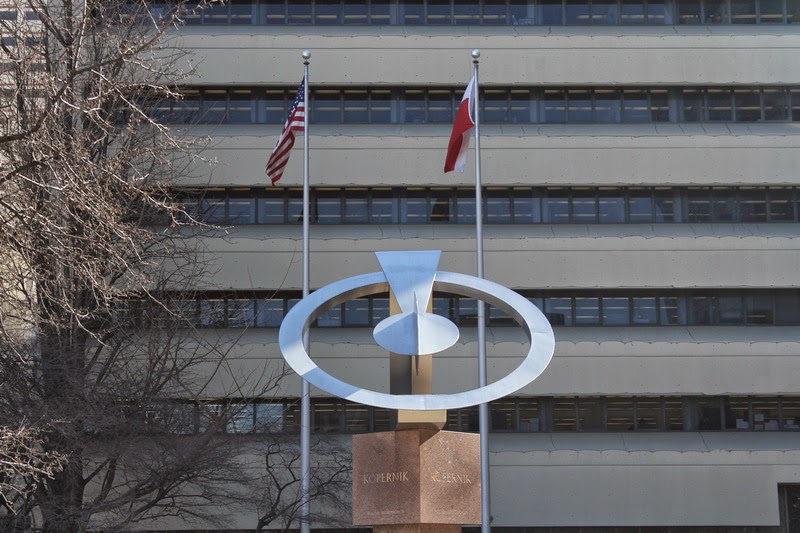Logan Circle, 20th and Benjamin Franklin Parkway
The jets of water are turned off during these winter months, leaving the Fountain of the Three Rivers somewhat bleak and inanimate, just as the rivers it allegorically represents are bleak, frozen or ice filled this winter.
 |
| Fountain of the Three Rivers |
Representing a river with a reclining nude god is a motif that has been employed for thousands of years in municipal art.
The largest of the three rivers is the Delaware River, represented by a powerful Indian male. He reaches above his head for his bow, while a fish leaps above him.
 |
| Delaware River |
 |
| Delaware River - detail |
The smaller Schuylkill River and its tributary, the Wissahickon Creek, are represented by female nudes. Swans are integral to these figures, an intended pun by Calder on the name of the donor. Maria Elizabeth Swann bequeathed funds for the fountain in honor of her husband, Dr. Wilson Carey Swann, founder and president of the Philadelphia Fountain Society; the fountain is also known as the Swann Memorial Fountain.
The Schuylkill River is represented by a mature woman holding the neck of a swan ...
 |
| Schuylkill River |
 |
| Schuylkill River - detail |
... while the Wissahickon Creek (smallest of the three rivers) is an Indian girl leaning on her side. Her posture is sometimes described as modest, but ... she is resting in the lap of a swan (if swans have laps), bringing to mind the classical account of Leda and the Swan.
 |
| Wissahickon Creek |
 |
| Wissahickon Creek - detail |



















































